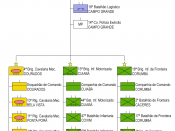Introduction:The article explores why firms employ a CMO and whether this presence affects firm- performance. Previous researches indicated that CMO presence reflects the importance of marketing at the top (Webster et al, 2003), yet the Booze Allen Hamilton study estimates 50% of Fortune 1,000 firms have a CMO while 80% Fortune 500 firms have a CFO. This paper is the first to reflect the importance of marketing at the TMT level while previous researches focused on the strategic business unit (Homberg et al, 1999).
Theory/HypothesesThe theories of contingency, power dependency and homophily underpin the study's hypotheses. Zorn's (2004) idea that CFO presence in firms is due to uncertainty in finance is adapted to assume that CMO presence is in firms where uncertainties appear in marketing. They identify that a firm's 'strategic, structural and environmental factors' indicate the presence/absence of a CMO. Therefore they hypothesize innovation, differentiation, branding strategy, outsider CEO and a firm's performance positively relate to CMO presence.
Conversely, high diversification and market concentration would mean less likelihood of a CMO whereas marketing and general management experience in the TMT could affect CMO presence either-ways.
MethodologyThe research uses reliable, high-quality, secondary data from COMPUSTAT. Definitions of measures, TMT, CMO, data sources, structure and environmental factors comply with previous academics as defined by the 10-K or proxy statements. The researchers use a quantitative approach in empirical testing using statistical techniques; however a qualitative strategy defines a CMO's role by analyzing press releases, job descriptions and interviews. Causality shows CMO presence/absence as the dependent variable measured against the independent variables. They use a cross-sectional, longitudinal design and time-lagged some variables to avoid reverse causality and retain internal validity. A positivist epistemological approach is followed as deductive procedures check the relationship between variables as done in natural sciences. They...



Woow
woow...unspeakable. this is great research paper
1 out of 1 people found this comment useful.